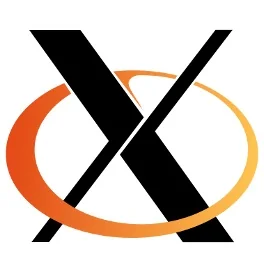X.Org 7.7 Katamari Finally Surfaces

The X.Org 7.7 katamari was originally expected in March at the same time of the X.Org Server 1.12 release, but that obviously didn't happen. The X.Org Server release schedule accuracy has improved a great deal, but the rare katamari event hasn't improved. The X.Org 7.7 RC1 was finally made available in mid-April, and then unexpectedly today, X.Org 7.7 was officially released.
The X.Org katamari isn't too exciting today with the modularization of X.Org and the katamari not happening at the same time as the X.Org Server releases. Most of the components making up this collection of X packages have been available independently for weeks or even months, but now it's just being advertised as the whole X.Org shebang.
Features of X.Org 7.7 therefore include all of the work that went into xorg-server 1.10/1.11/1.12 (the releases since December of 2010), finishes converting documentation to DocBook/XML, sync extension 3.1, X Input 2.2 multi-touch support, and XFixes 5.0 with pointer barriers. That's it for the key features as mentioned on the Wiki. There's also a plethora of improvements to the individual X.Org input and graphics drivers, libraries, and other areas since the last katamari tagging in 2010. Basically, anything you've read on Phoronix about X.Org since the end of 2010 that has been merged, is part of this updated package collection.
The source tar-balls, release notes, and other information for X.Org 7.7 is available from X.Org.
There's also the mailing list announcement.
X11R7.7 supports Linux, BSD, Solaris, MacOS X, Microsoft Windows and GNU Hurd systems. It incorporates both new features and stability and correctness fixes, including support for reporting multi-touch events from touchpads and touchscreens which can report input from more than one finger at a time, smoother scrolling from scroll wheels, better cross referencing & formatting of the documentation, pointer barriers to control cursor movement, and synchronization fences to coordinate between X and other rendering engines such as OpenGL.
...
- Multi-touch events are now supported for touchpads and touchscreens which can report position information on more than one finger providing input at the same time, such as found on many tablets and recent laptops. These are exposed by Xorg server 1.12 and later via the Xinput extension version 2.2.
- Additional Xinput extension features were introduced in version 2.1, as supported in Xorg server 1.11, including allowing clients to track raw events from input devices, additional detail in scrolling events so that clients may perform smoother scrolling, and additional constants in the Xlib-based libXi API.
- More progress has been made on the X.Org Documentation modernization - the rest of the library and protocol specifications have been converted to DocBook XML from the variety of formats they were previously in, and support for cross-linking between documents hase been added. On most systems these documents will be installed under /usr/share/doc/. They are also posted on the X.Org website at http://www.x.org/releases/X11R7.7/doc/
- Fence objects are now available in Version 3.1 of the Synchronization (“Sync”) extension. These allow clients to create a object that is either in “triggered” or “not-triggered” state, and to perform actions when the object becomes triggered. When a client requests a fence be triggered, the X server will first complete all rendering from previous requests that affects resources owned by the fence's screen before changing the state, so that clients may synchronize with such rendering. Support for these has been added to both the libxcb-sync and libXext API's.
- Pointer barriers were added by X Fixes extension Version 5.0. Compositing managers and desktop environments may have UI elements in particular screen locations such that for a single-headed display they correspond to easy targets, for example, the top left corner. For a multi-headed environment these corners should still be semi-impermeable. Pointer barriers allow the application to define additional constraint on cursor motion so that these areas behave as expected even in the face of multiple displays.
- The XCB libraries have begun adding support for the GLX and XKB extensions. This work is not yet complete in this release, and not all of the functionality available through these extensions is accessibile via the XCB APIs. Some of this effort was funded by past Google Summer of Code projects.
X.Org 7.8 comes at a time when X11 is about to turn 25 years old. The next X.Org Developers' Conference is this September in Nürnberg.
Next up will be X.Org 7.8. The mailing list release announcement mentions, "The next full release will be X11R7.8 and may happen in 2013." So we may see it next year, or it could quite possibly be delayed until 2014 based upon past releases.
6 Comments

